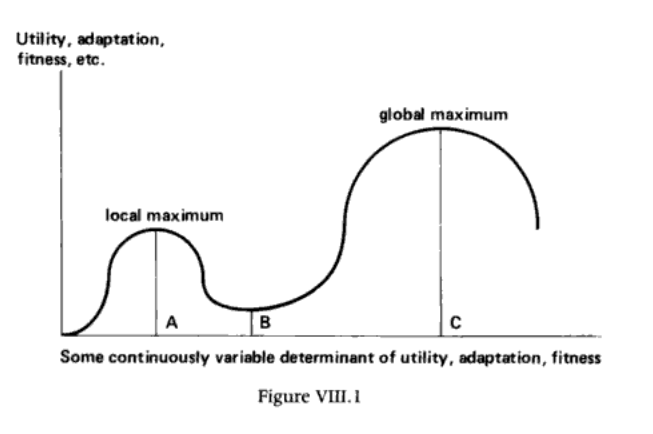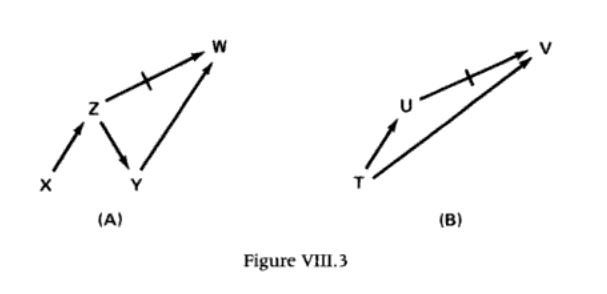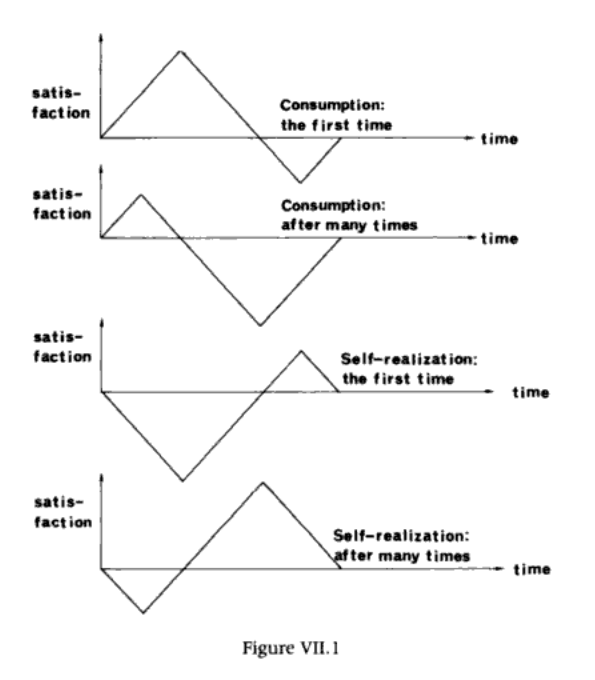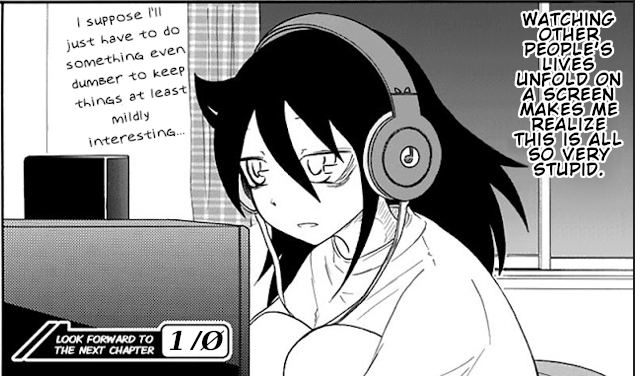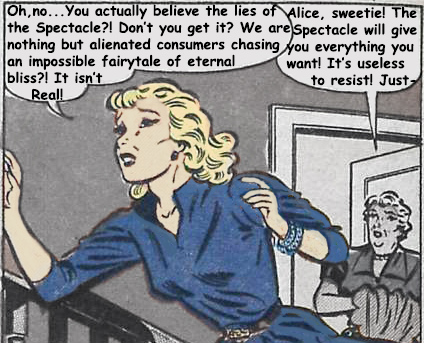[A-Com./Philosophics: 1.01]
{Die allokative Funktion ein Messers, die Differenzierung ermöglicht - oder: wie man mit einem Messer philosophiert}
Knife, in its mundane and banal state, that is, in its concrete physicality, is quite bare in its applicability, but, when brought into the mental dimension as a metaphysical or symbolical notion, the realization of the limitless applications of its abstracted substance becomes a more clearly recognizable possibility.
At this level, when it is examined and apprehended by our thought, it can be said that the function of a knife (as an utensil) turns polymorphic, multidimensional, and displaceable. That is, the essence of the now abstracted substance becomes fluid, more variegated in its possible uses, its function can be made to span domains, and these activities of the mind permit us to i) separate the concept from the real, and ii) replace one concept with another or to transfer a concept from one setting into wholly another[*00].
When it comes to the qualities of knife (that is, its concrete physicality), its substance embodies sharpness, hardness, and unintentional coldness. The first two of the aforementioned qualities relate to its function, namely that of cutting. Out of this general function of a knife as a knife we can discern three more basic (sub-)functions, namely penetration, separation/allocation (including dissection and vivisection), and stripping. In the first and last sense, the knife is an extremely erotic and, frankly put, imposingly sexual tool in the masculine sense of the word.
At any rate, these functions aren't inextricably tied in with the actual, physical knife, as it was already stated before, so, even if disjointed from their original context, they will retain their sensibleness as archetypal formations. What is being postulated here is that the functions of a knife (namely penetration, allocation and stripping) take on a profoundly radical meaning(s) when these functions are applied to the human mind – or, much preferably: to the psyche.
A word of caution!
Anyone wielding or, more importantly, using a knife, should always know what they are doing.
[A-Com./Philosophics: 1.02]
{Außergewöhnliche Plattitüden}
The use of knife, taken again in its mundane and banal, physical form, begins with a phase independent of the actual knife. This is the intent, the objective that needs to be executed or performed for whatever personal ambitions one is driven by.
From there it moves on to the preparatory phase of manipulation, which is the act of directing the blade in order to execute the last, climaxing phase succesfully. This last phase is where the inexorable piercing force is directed into or towards the desired object in order to produce the wanted outcome or effect.
These vapid revelations are common to everyone and attainable by anyone, as all those who have ever held a knife in their hands could tell. But when these elements are again carried over to the mental dimension, we start to see beyond their little more than mundane, limited usage, into their universal application[*00]. Let us make this point more tangible by common sense sort of illustration point by point.
Firstly, in order for the desired effect to take place, there first has to be a reason, an initial desire, for it. Without a sufficient reason to move or act you – yes, you – are going to stay passive and inactive for as long as nothing disrupts your current circumstances. The knife is left lying on the table, unwanted and unused. What a waste...
Moreover, it will not suffice that there is a general willingness to use a knife, at least not for long. It requires the right kind of reason. One appropriate for whatever the three functions can reasonably be thought to be able to produce – which is almost half of everything. In this sense anti-comallodianism can be characterized as an open-ended play[*01].
Secondly, with the desired objective clear in mind, executing it in the right manner can make all the difference in the world. The right angle and appropriate force for the right kind of task. Of course, for coarce aims, even the dullest blade will penetrate when the necessary force is applied, but the number of aims solved by brute force alone are rapidly dwindling.
For complex tasks and difficult aims great care and finesse are required so as to prevent getting lost – among other things. Emphasis is on the avoidance of getting lost, due to the tremendous difficulty inherent in simply transporting any entity from A to B. In this sense anti-comallodianism can be characterized as a method[*02].
Thirdly, and this is vital, there has to be an action (as well as power sufficient for its effectuation) for the initial objective to be carried into completion – for reaching the fulfilling endpoint where something abstract is made tangible, palpable; even if only fleetingly. An effect, consequence or event which affirms the existence of the desire: its reality made incarnate. Without the action, it is as if the want never even existed. When you strike with a knife, it also reveals something of the immense reality of vitae: you get to the heart of things, where the point of the point is the point.
It is in this singular, sharp point, where the whole world culminates into at the moment of impact. A cut so piercing that it feels like it touches your soul and stops your time even if only for a second; empires can crumble and Kaisers be proclaimed during that punctual second. It doesn't matter whether you're the one being struck (even if only with words), the one who strikes, or both, for there is still thrill and drama to be had for both. In this sense anti-comallodianism can be characterized as art[*03].

[A-Com./Philosophics: 1.03]
{Unterbrechung: Haftungsausschluss}
As an additonal annotation, the present system of an existential political kind at hand, which anti-comallodianism at its essence aspires to be, aims neither at persuading you of the validity of any particular socio-political ideology nor to proselytize you into any specific religious worldview, but rather to identify and raise awareness of the disconcerting developments in the unconscious and superconscious psychogenic structures of our intersubjectivity that are occurring in our current ideological landscape.
These developments are expected to have notable effects on our behaviour, psychological apprehension as well as philosophical activity and possibility. This is due to the complementary inter-linkage or causal connection between the totality of 'intersubjectivity' and the singular subjectivity of the (private) person, for it is the initial conditions of intersubjectivity that sets the preconditions for the delineated, conscious awareness, conduct, experience as well as imagination of the afflicted subjects.
In addition to monitoring, tracking and intellectually dissecting these divergent developments of the current and still emerging order of things, anti-comallodianism seeks to devise the means of opposition as well as to produce the indispensable nomos that is needed in order that the resistance of the attempts by the regime of the Homo Modernus to recuperate the nascent position (or: point) of ambience, which brims with inexhaustible significance and power, could be sustained indefinitely.
Due our presently held indefinite and flimpsy grasp of the true nature of these observations and yet to be determined real scope of the problem, further investigation into these matters is resumed.
The terminal point of anti-comallodianist program is the successful production of an autonomous unit, whose trajectory towads an indeterminate endpoint is guided by the unwavering mechanisms or principles of 1) ever-expanding expression of life, and 2) the persistent intensification of lived life. This is to be accomplished by the means of experimental demonstration, allocative contemplation and dissemination of information pertaining to various subjects, most notable being the disagreeableness of comallodianism.
An anti-comallodianist, therefore, is someone who shares in of the same general desires of convalescence, amelioration and, eventually, transcendence as any other layperson would after a prolonged affliction, although in contradistinction to the methods of a layperson. That is, an anti-comallodianist fulfills his or her objective(s) through autonomous means, often characterized by negation (of the prevailing conditions), and in line with the ethos of anti-comallodianist thought.
A word of caution!
As this program is still in its experimental phase, all delusions of competence imposed upon the ideology are to be dispelled forthwith.
[A-Com./Philosophics: 1.04]
{Formulierung des Rahmen für das Konzept der allokativen Funktion - Was ist zu tun?}
The knife cuts the knife, and leaves in its wake solitary parts and pieces of weak presence and pale apparition. Without context and structure the system is destined to disintegrate. An assessment of the current state of affairs: pitifully untenable. Corrective measures prescribed: cauterize and forge!
*****
The present Contention serves as a necessary interphase for arranging the scattered results of our previous efforts into an adequate, preliminary structure that, for the time being, will guide our endeavours to constitute the foundation of the anti-comallodianist ideology.
Up to this point, we've managed to make only a slight and shallow penetration into the murky and hazy world of metaphysics just to see the very tips and the most generalest of outlines of those concepts that we can extract from the physical knife, turn into separate abstractions and utilize for our own purposes in a practical manner. What is now needed for turning these pale abstractions into noteworthy realities is a little bit of forcefulness - to push on through the pains of childbirth.
The ensuing operations in this and further Contentions to be effectuated are I) further corroboration of the membrane of the aforesaid embryonic concepts and their links to each other II) precise demarcation of parameters for the aforenamed solitary concepts, and III) subsumption and reassemblage of the foregoing vital concepts into a working categorical whole.
To recapitulate the results of our excavation briefly, the concepts we have been able to procure from it are: penetration, allocation/separation, stripping, intent, objective, manipulation, point, play, method, art, and, most vitally, that of vitae.
As a supplementary remark, it must be stated that, in addition to the aforementioned concepts, there necessarily exists, as an implicit (and to an unnoticeable degree obvious) assumption which was failed to be explicitly stated in the previous Contentions, namely the wielder of the knife, from which we may extract the concepts of subject and subjective agency - both of which have countless derivative aspects to them that we are most certainly going to be taking into account and further dissect in our future Contentions.
It was noted in [Contentions: 1.01] that the knife's divisive (primary) property comprised of at least three general, more elementary functions, namely penetration, separation/allocation and stripping, the tenability and factuality of their existence being established only by sheer intuition. In addition to these elements, we've touched upon the knife's three associated phases (i.e. play, method and art) in [Contentions: 1.02], while incorporating a number of literary openings into them for further developments and elaborations. What we're seeking to establish in the coming investigations is the datum that these six concepts are interrelated and hence constitutive of the anti-comallodianist credo.
There are four prerequisites working on the background that need to be recognized in order to establish this datum:
1.That the knife, when it is used, imposes an imaginary (although not an illusory) structure, rooted in an intuitive understanding of its use and function.
2.This structure characteristically reflects and conforms to the same patterns and form as its most rudimentary constituent (conceptual or otherwise).
3.That possibility implies presence, which means that the possibility to philosophize with a knife affirms the real presence of the knife's inherent ideological structure.
4.That, from the first moment of conceiving the structure, a permanent link from the physical knife to its conceptual, metaphysical derivative (and vice versa) will have been established, and which will persist as long as the physical knife itself endures to provide an access point.
When these points are recognized and accepted, the foundational groundwork of the anti-comallodianist ideology can be established, whereupon it will take on the form of an independent, indefinitely reproducible and self-organizing idea (due to the structure's intuitive nature and its physical persistence), thereby making it accessible to anyone for them to invoke, should they ever come to need the forcefulness of a vital impetus in their transient lives.
To make our first step in corroborating the first batch of embryonic concepts, keep in mind the second principle, for we will have to make heavy use of it. Since the three functions of knife share a common origin (i.e. cutting), it naturally follows that a common rudimentary process or property underlies them all, despite the different manners by which they phenomenologically appear to us. This common property is the state or process of separation, division or splitting - things being either moved or taken apart.
This extraordinary platitude can be easily established when we consider the three functions more closely. First, in the case of penetration, although the word's semantic composition leads us to fixate our attention on the aspects of momentum and entering (into / through something), what takes precedence over these auxiliary characteristics is the property that enables their fulfilment in the first place: the fact that things belonging together can be made separate. If this was not possible, momentum would not matter and nothing could be carried inside the object.
Second, concerning stripping, we come across the same rudimentary property as in the latter case, but with a distinction: while the separative quality in penetration hinges on the act of parting things that belong together, in stripping we are concerned with pulling apart things that do not inherently (be it essentially or artificially) belong together. A classic example of the artifical kind would be the undressing of stockings, whereas an example of the essential kind could be when someone is being stripped of their dignity, because someone deemed them as not belonging together.
The last of the three functions, namely allocation/separation, won't be requiring similar elaborations to establish this connection, because the definition already expresses the function's separative quality. Nevertheless, there is a distinct emphasis between the two concepts being equated here: the latter one (separation) describes the property in its barest form, whereas the former (allocation) adds that the action is done either in accordance to a plan or that the resulting distributions or partitions are set aside and preserved for a special purpose.
In order to make it easy for us to refer to this complex of differing separative qualities simultaneously in the future, we're going to refer to them using a single term different from "cutting", so as to avoid nullifying our progress, and in order to keep them fresh and at hand in our working memory. Taken together, these functions are to be called the allocative function[*04].
[A-Com./Philosophics: 1.05]
{Über die Natur der Allokationsfunktion}
What makes the allocative function so fundamental to the sustained existence of anti-comallodianism is the fact that the function itself is essentially self-generative by its nature, for it was brought about (and can always be brought back into existence at any time in the coming future, should the original (i.e. "first historical instance of") source ever be lost) through allocation - or, more poignantly put: through the separation of separation; the application of separation onto separation[*05]. What is meant here by the function's "self-generative" nature is 1) the function's astonishing ability to produce an infinite amount of distinct entities by itself, regardless of how infinitesimal in quality they might be, and 2) that the function is absolute and unnegatable, for it relies (in its subsistence) on no external principle or higher justification than itself - it is self-sufficient, for it produces itself when it applies itself onto itself.
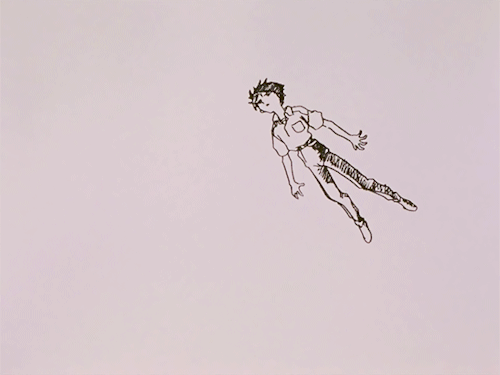
Allocation, separation, is what characterizes and defines us on an existential level: it is the active, inherent component of all creation - the engendering push or spirit that makes us who we are. From the moment of our conception, we are separated from our Mother, and when we begin our individuation process, we go through various instances of sepration (and unification) by identifying ourselves with (or distancing ourselves from) some particular group, clique, movement, idea, brand or activity, which are necessarily made distinct from everything else by separation, distancing or restriction, and which maintains their existence and distinctiveness to everything else (both conceptually as well as concretely) by a fence, border, line, plot, definition or outlines.
This state of affairs applies to each and every truly existing object. It is separation what is required for something new to emerge: only by severing the linking ties of an entity to its current arrangement or configuration can the merely ordinary move past its old, restrictive form and become part of something greater. Due to its inseparable and indispensable role in and to our existence, we're to take it as the first principle of this system. It is pointless to try and speculate on the function's ontological origins any further than this. For us, and our intents and purposes, all that suffices is that it exists, and that we can make use of it, to utilize it in our objective of expanded expression of life.
[A-Com./Philosophics: 1.06]
{Wie man mit einem Messer philosophiert - Zusätzliche Untersuchungen, Teil I}
Picking up where we left off in [Contentions 1.04], the next move we are going to make is examine how the allocative function and the three previously mentioned phases of knife relate to each other.
For this specific task, we are inclined to make a terminological distinction between phenomenologicals on the one hand, and functionals on the other. The goal that this more precise sorting seeks to accomplish, are the II. and III. operation(s) objectives presented in [Contentions 1.04][*06]. Basically the two above categories are comprised of i.) open-ended play ii.) method iii.) art, and a) allocation b) penetration and c) stripping, respectively. Nevertheless, now that these concepts have their own common denominators, the concepts themselves become part of something greater: they reveal to us a hidden aspect or perspective to them, which they share with each other in their designated groupings.
The latter of the two categories is comprised of abstracted (that is, "emancipated from a physical presence") meanings that are internally or subjectively executable, and effectual (this includes, but is not limited to, the allocative function and all of its subfunctions mentioned above[*07]), whereas the former one comprises of contextualizing, emotive and externally or objectively structuralizing meanings. To put it differently, the phenomenologicals are "outsidly inwardering", and the functionals "insidly outwardering"[*08]. It can be said that the two are related through lexicographical ordering, the latter being, in some regard, subservient to the former.
*****
An obligatory elucidating remark: the method we're currently deploying here is the allocative function in action. We started from a single concept ("knife"), applied allocation onto it, then proceeded to penetrate into it conceptually to reveal its deeper underlying complexity and richness [*09], and now we're trying to relate the resultants to each other by emphasizing their contrasts and differences to one another via further dissection and highlighting of the concepts' dissimilarities.
On that note, a good heuristic to follow, in regards to our endeavours of gaining a deeper understanding of the wider world, our place in it as well as the internal workings of our psyche, is that, if it's separable, it is manageable, but, carrying it too far, one will end up drowning in separations.
*****
These two categories can be related to each other at least in two ways: 1) by penetrating or analyzing the phenomenologicals from the perspective of the functionals, or 2) by penetrating or analyzing the functionals with the phenomenologicals. Even though the two categories can be seen as being hierarchically ordered, they can be made to interact with each other and directed at each other. This arrangement persists for two reasons: a) them being abstractions, in unambiguous terms, we won't have to think about the nitty-gritty realities of how they concretely fit in with the higgledy-piggledy world of ours, and b) the phenomenologicals, being meta-level meanings in the sense that they do not attempt to represent us how the outside world actually stands ("wie-es-eigentlich-ist", as the Germans would say; indepentend of any conscious observer), can carry us into no contradiction with the functionals, for the reason that they do not operate on the same logico-metaphysical level - in short, they are incommensurable.
At any rate, wherever the former case persists, the relation is descriptive[*10], whereas in the latter case, the relation is normative. We will explore these relations in great detail in the next Contention.
What you must note here is that while the phenomenologicals are sequential (meaning that you must begin the process from open-ended play and go through method in order to reach the endpoint, namely art), the functionals are not. What this implies...

[A-Com./Philosophics: 1.07]
{Wie man mit einem Messer philosophiert - Zusätzliche Untersuchungen, Teil II}
⚠ Note: this Contention is still in its raw form, and will be subject to changes. The reason for publishing the text prematurely has to do with the demand for acceleration of philosophical production and ideological formation, induced and spearheaded by the anti-comallodianist imperative for resolute proceeding of untapped desires from the realm of mere possibility into substantial actuality - a desire is for nought, if its splendour cannot be attested to. Weiter! Geh Weiter! Immer Weiter!
*****
We might visually (re)present these two relations through the following table.
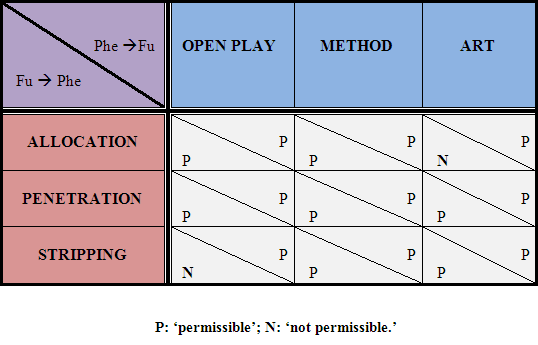
What the present table indicates is [the area of] what is possible/permissible/feasible while philosophizing with a knife. As one whose powers of observation are not compromised might tell, there are two restrictions that [- apart from all the other ones, there are two that are imposing restrictions/] are imposed upon our operations on/in(?) the interplay of these two categories: 1) you cannot strip active play, and 2) you cannot allocate art. The explanation for why this is so and not otherwise will be presented at the end of this Contention. For now, let us set about to/for corroborating these [remaining other] relations point by point.
[Additional remark, some of the terms are left (somewhat) intentionally vague, for there is a kind of power in symbolic expressions that doesn't quite yield to logical, rational and [yksiselitteinen] inquiry let alone manage to capture its depth, beauty and liveliness; this ought to be kept in mind, for the following elucidation ought not be taken as exhaustive one, and that many other possible aspects are to be found in the system in the course of its lifespan (of course, only open/available for those who find meaning in anti-comallodianist thought).]
[we can extract their the phenomenologicals' meaning by asking the questions "what are you going to do?" (answer: open-ended play), "how are you going to do it?" (answer: with a method) and "why?" (answer: because of art).
OPEN-ENDED PLAY>
Open play is unstructured, free and expresses freedom. It differs from ordinary life and aspires to transcend beyond it (the so-called "magic circle"). Even if unstructured, spontaneous, play creates order [that fosters tension of a serious kind] and is connected with no material interests.
[Play is a voluntary activity or occupation executed within certain fixed limits of time and place, according to rules freely accepted but absolutely binding, having its aim in itself and accompanied by a feeling of tension, joy and the consciousness that it is "different" from "ordinary life".]
["So, to decide how to play and why to play is to create for oneself a destiny, a fate, a goal, and, yes, even a purpose, where previously only dubious and spurious destinies, fates, goals, and purposes existed. It may not be everlastingly, cosmically, supernaturally meaningful - but that doesn’t stop it from being immediately, personally meaningful. Eternity may make an absurd mockery of our actions, but we fight on. By fighting against the inevitable, we carve meaning from meaningless."]
It links us up with what is possible/world of possibilities.
[why 'open-ended'? It was chosen for the reason of it expressing adequately the aspect of human condition that is characterized by "thrownness".]
[a couple of related notions: Agon (competition), Alea (coincidence), mimicry (mask), ilinx (intoxication)]
[the purpose of the game is not really the solution of the task, but the ordering and shaping of the movement of the game itself - an essential feature of playing is that there is always something other, and so play is seldom radically subjective. The experience of the player is partly constituted by this moment of otherness. The player must respond to some event, in the context of a structured situation. Playing consists in a trans-individual process of action and reaction, which often takes on a to-and-fro quality reminiscent of dance. …the fascination of play lies in the way this structured movement "draws" players into its arena and "fills" them with its distinct spirit. The encounter with otrherness is thus an essential aspect of the play experience.]
[Playing is a medium where lived experience is organized as a structured situation. - it is not rational, but an irrational activity, for players are typically motivated by the quality of experience that playing affords, not by the expectation of some future utility.]
1. allocation
2. penetration
3. stripping
0. ALLOCATION <
1. PENETRATION<
2. STRIPPING< (NOPE)
METHOD>
Method is either a particular way of doing something in order to attain an object or a procedure for accomplishing or producing something - in crude terms, these can be expressed as mapping a way from point A to point B.
1. allocation
2. penetration
3. stripping
0. ALLOCATION<
1. PENETRATION<
2. STRIPPING<
ART>
Here we are using the term "art" in a manner deviating from its orthodox usage, and rather refer by it to the satisfaction gained from the contemplation of art, the kind of immediate (the thing-in-itself) satisfaction that doesn't require a further justification, reason or rationale for it to be worthwhile.
[there is an immense amount of satisfaction to be gained merely by the act of cutting itself, satisfaction which isn’t restricted to the corporeal kind.
[veitsessä piilee myös esteettinen, tämä on: taiteellinen olemus, sillä se mahdollistaa artefaktejen, eli ihmisten luomien esineiden tai asioiden, tuottamisen. Voimme tarkastella esimerkiksi sitä, kuinka itsensä paloittelu on oikeastaan esteettinen kokemus: mikäli yksilö leikkaa jonkin osan itsestään, tämä nyt kehon ulkopuolelle jäävä osa on luokiteltavissa artefaktiksi, koska ihminen on luonut sen. Sanotaan, ”taide on tuskaa”, ja se on totuus.]
It links us up with the reality/realm of vitae.
1. allocation
2. penetration
3. stripping
0. ALLOCATION< (NOPE)
1. PENETRATION<
2. STRIPPING<
Earlier mentioned restrictions to the system: 1) you cannot strip active play, and 2) you cannot allocate art. The explanation for why this is so and not otherwise, has to do with their relations: when we're concerning ourselves with active play, we're also dealing with pure possibilities, which - lacking a physical presence -
One reason for why you can't strip open play is because it would be fruitless (when a possibility is being actualized, no matter how great the idea is, it is going to face opposition and [ilmentää] contradictions. So, instead of stripping it needlessly at the stage of pure potential, one ought to refrain from stripping it - this refrainment has the added benefit of speeding one's progress of actualization.
[toinen mahdollinen, vakavasti otettavampi selitys tälle liittyy vapaata leikkiä sääntelevien sääntöjen vapaavalintaisuuteen: ei ole tarvetta pakonomaiseen (involuntary) objektin karsimiseen, perkaamiseen, väkivalloin tehtävään erottamiseen, koska niistä voidaan halutessaan luopua; syy sille, miksi tämä ei pätisi yhtä lailla esim. ihmisen psyykeeseen [detachment?] liittyy siihen, tosiasiaan, että – koska ihmisen täytyy itseensä kohdistaessaan allokoivan funktion suhtautua itseensä kuin vieraaseen otukseen, jolloin suhde on enemmän väkivaltainen ja pakonomainen (kohteen kannalta), siitäkin huolimatta että päätös tehdään ihmisen omasta vapaasta tahdosta ennen itsensä vieraaksi mieltämisen vaihetta.]
[A-Com./Theoretics: 2.01]
{Der Ausgangspunkt}
Ours is a world of preconditioned atrophy – a totality deadset on acting upon its own intrinsic, in-built death instinct which slowly, but surely, drives itself towards its own annihilation. It is a world predispositioned towards an inevitable omega point: that of fragmentation, dissolution and deterioration of its own initial orderly coherence – this, at least, according to our puny, all-too-human understanding of it all.
A world of twisting, tearing and wearing things of greater as well as of lesser importance down, down to their original base components, until nothing but a skeleton or a bear knob of its (be it that of an object's, a thing's, or a concept's) meaning – if not even that – remains.
Via negativa – that's the prime directive, the ultimate guide of our collective voyage; it is at the roots of this world – for all the good as well as evil which it has caused (and still keeps on causing) for us. Curse the order or do not, weep for it like Heraclitus; laugh for it like Democritus, it makes not much difference.
In physics as well as in chemistry it's all happening for the reason of atoms and molecules finding the minimum optimal energy state – a balance of sorts. But what about humanity? By what laws and rules is humanity governed and ruled by? Where is it heading? To what end or purpose is it striving? Is it truly thus so, as one of the random moustaches said, that the earth is unchained from its sun, and that we are now destined to set sail upon a strandless, boundless sea?
To answer the first question, one could retort: "by the very same as the whole of universe is, obviously!" But this answer would be pure naïveté, for there is, nonetheless, something determinatedly distinctive in the way by which the rules of our natural world – our ius naturale – and their manifest echoes made known to us in – or, one could almost call them "violating invasion(s)" into – our Lebenswelt: the prevailing regime of our geistliches human-inhabitat.
A world governed by the rule, the unyielding iron fist of diminished returns, of bodies growing old, decaying and dying, only to end up turned either by worms or the mindless fungi into pure energy to keep the gears spinning and the cycle(s) going ad infinitum; of surmounting base human mental anguish, Weltschmerz and turmoil, with a subsequent mounting up of pressure as well as internal, yearning torment upon those of us who see the world for what it is and try to make a break for it – to escape from the mundaneity of it all by reaching an abstract archimedean point, to reach the escape velocity from our shared realm of dry, monotonous and unremarkable Schlechtigkeit, in order to reach up all the way to the stratosphere, and beyond – even to the stars themselves.
But what this Vertreibung from the Paradise, from the comfortable womb, the origin point, the primordial crevice of humanity, this lamentable state of affairs also implies is not only a world deterioration, but also that of differentiation.
In the societies we have erected for ourselves in order to keep the natural order at bay, this universal precondition of our universe's atrophic quality is itself accompanied by another kind of quality – namely that of mutability, even of probability: what is not repudiated or prohibited by our law-abiding universe, must therefore be permitted – "do as thou wilt, shalt be the whole of law", as another one who bit the dust used to say –, notwithstanding our human-induced conjectures and projections upon it. Draw your own conclusions from that, whatever they may be!
Nevertheless, be it as it may be, there are human games and then there are godly games to which we may partake on this uncharted, unpredictable little voyage of ours. "Choose your battles", as a man of artful wisdom of struggles said. So choose yours carefully, for we can already see to which end the society of ours is geared towards, and that is towards enfeebeling and weakening, of pacifying, subduing, and inhibiting our powers and desires for larger-than-life-pursuits and other-wordly-aspirations. This is the way towards an abyss, not the one of transcendent kind, which shakes us to our very core and calls forth and arouses in us our inner, yet-to-be-realized strengths, but rather one to cause us to wilt and stagnate while sitting up straight (and what an unsightly sight that is to behold!).
In order to subsist on this little atrophic world of ours, and to fulfil our in-born crave and duty for things greater than ourselves, we must aspire to these things to the benefit and betterment of our fellow man, men and women, for there resides our permanent, truer selves. But before any of that can happen, we have to muster the will to keep ourselves on this planet and struggle for what is destined for us, for humanity as a whole, in order to realize this destiny. Every single take of breath, every single drop of sweat, and every single beat of heart represents this struggle, this fight to live, and subsist, to grow past and overcome your current selves. To cease fighting, to stop pursuing these goals, to not live as you were intended to live, is equivalent to being sentenced to death, for without such goals, without things to overcome, we start to stagnate and shortly afterwards begin to turn hollow.
If there is one thing you should know, it is that your struggles (whatever they might be and whichever form they might assume) are to the benefit of mankind as a whole, and not at all in vain. So don't let your great depression be your life. Help yourself. Help your fellow man. Strive for perfection. Struggle well, and overcome! This is the only true path to redemption.
[A-Com./Theoretics: 2.02]
{Eine Ahnung von die Form der Dinge zu kommen}
⚠ Note: this Contention is still in its raw form, and will be subject to changes. The reason for publishing the text prematurely has to do with the demand for acceleration of philosophical production and ideological formation, induced and spearheaded by the anti-comallodianist imperative for resolute proceeding of untapped desires from the realm of mere possibility into substantial actuality - a desire is for nought, if its splendour cannot be attested to. Weiter! Geh Weiter! Immer Weiter!
*****
At the time of verbal composition, it is here suggested that the aforementioned transition(s)/developments [in the ideological landscape] all share a similar direction, patter or feature of procession, which gives reason to suspect of a (or a number of) mo encompassing, wide-ranging force, factor or cause to be in effect behind these alterings, changes and reshapings of the current zeitgeist and the resulting phenomenological state of affairs.
As a preliminary note, these developments can be seen on the level of politics (e.g., welfare retrenchment, prevailing acceleration of political polarization), art (e.g., general cessation of artistic progress at a state of cul-de-sac, the humans of flat design,
Pertaining to the designation of this variegated complex of apparent developments (and the general 'logic' behind them) collectively, we see it fitting to announce the beginning of a new historical period, henceforth to be called the
age of disintregration, under which these new developments can be placed and within which they can be meaningfully categorized and later apprehended, for it seems to be the case that these "advancements" seem to be converging on and circling around the processes of
hollowing,
fracturing,
de-centering,
dissolution and
dissociation - namely, of
disintegration.
of the age of disintegration. Further investigation into these matters is resumed.
This is not a triumphant declaration, but a lamentable… of sorrow.
